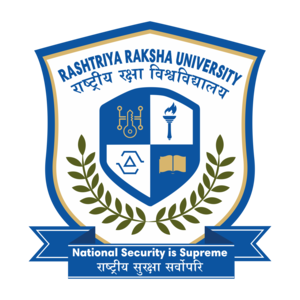
Mines and Minerals Amendment Act, 2015
Mines and Minerals Amendment Act, 2015
- Akshat Kothari, Institute of Law, Nirma University
Introduction –
Mining is one of the major economic activity in India, accounting for 2.3% of the country\'s gross value added (GVA) in the initial quarter of 2017-2018. The sector provides the raw materials needed by several of the country\'s manufacturing and infrastructure industries.
As mining sector is significant for India, it is important for the government to make it highly regulated and legal framework should be strict for a transparent and efficient regime.
The Mines and Minerals Act of 1957 (development and regulation) regulates the mining sector in India and specifies the requirement to maintain mining companies and grant mining leases.The Mines and Minerals (Development and Regulation) Amendment Ordinance, 2015, promulgated by the President of India on 12 January 2015 introduces highly anticipated mining reforms and amends the 1957 Mining and Minerals (Development and Regulation) Act Background to the Act long-standing and overdue on the change of mines and minerals (development and regulation) from 2011.
For over a decade before 2015, debate had been going on for the need to amend the MMDR Act 1957. The discussion intensified with the publication of the report of the High Level Committee on National Mineral Policy (2006) and the report of the Center for Science and Environment 2008 environment (Rich, poor countries: is sustainable mining possible?). Subsequently, the 2011 law on mines and minerals (development and regulation) was drafted and introduced in parliament. However, due to disagreements within the UPA government and industry pressure, this bill was able to expire in February 2014.
The 2015 MMDR bill is a distorted version of the 2011 MMDR bill. A coherent package has been cut to meet the short-term interests of the industry, and all progressive ideas to improve the sector\'s environmental and social performance have been thrown out the window.
Key Changes –
Although most of the main clauses remain unchanged, some important additions / exceptions have been added with the expectation of improving Indian mining laws and bringing control over the illegal mining license and lifestyle of communities in and around mining lands. The goal of the 2015 MMDR Amendment Act was to make a straightforward and non-discretionary system for the conceding of mineral concessions and to cure the decline in mining creation. Some of the major amendments introduced by the MMDR Amendment Act 2015 were as follows –
Deemed extension of mining leases – the lease period for all metallic and non-metallic minerals, such as, iron-ore, lead, manganese ore, zinc, lead, gold etc. were extended to a period of 50 years. On expiry of the leases, the lease won\'t be renewed, rather the concessions will be set available to be purchased;
Prospecting licence-cum-mining lease – new concept of prospecting licences-cum-mining leases was introduced for certain notified minerals (such as, bauxite, iron ore, limestone, manganese ore) in areas where there is scarce proof to show presence of mineral substance through the system of serious offering;
Protection of the rights of existing concession holders and applicants under Section 10A of the MMDR Act;
Allocation mechanism – grant of mining leases in respect of certain notified minerals would be done through auction by competitive bidding; further all provisions with respect to the process of allocation of mines through auction by competitive bidding were streamlined;
Grant of mining leases – the requirement of prior Central Government approval for grant of mineral concession for all the minerals specified in the First Schedule was removed for all mineral concession;
Transferability of leases – mineral concessions (prospecting license-cum-mining lease or mining lease) in respect of minerals other than coal, lignite and the atomic minerals, granted through auction were made transferable, subject to prior State Government consent and defiance with prescribed process. Significantly, the concept of approved approval was introduced if the state government did not submit its approval within 90 days of receiving the request.
The act arrange for the formation of a District Mineral Foundation (DMF) and a National Mineral Exploration Trust (NMET). The state government will set up the DMF to improve people\'s lives in areas affected by mining. The NMET is set up by the central government for regional and detailed mine exploration. However, this tax, which is paid to DMF as royalties, has a twist. Although the amount payable to DMF has been set at 33% of the license fee payable, existing miners of minerals, including coal, must pay the District Mineral Foundation (DMF) 100% of the license fee above the DMF from license fees paid by them to state governments. While assigned mines were set at 100% prior to the MMDR changes, state governments are expected to get the full amount back.
The law also requires state governments to comply with constitutional requirements related to programmed tribes and other traditional forest living and panchayat laws by establishing DMF operating rules. This would allow the government to have a special exploration fund. The law also contains strict provisions against illegal mining, as violations of mining-related matters are punished with a maximum sentence of 5 years in prison or a fine of Rs. 5.00 lakhs per hectare. State governments are also empowered to set up special courts to speed up criminal proceedings. Taking into account the problem of local mining opponents who have had an impact on the operation of the metallurgy and mining sectors for such a long time, these provisions are expected to control the complaint and provide money for the creation, management and maintenance of the local infrastructure in areas affected by mining.
Anti-Poor Aspect of the Bill –
CAG\'s audit reports on mining revenue in states such as Orissa, Goa and Karnataka highlighted the need for a strict mechanism for renewal of mining leases. Instead of strengthening the processes, MMDR Bill prescribes a general expansion.
Issuing mining prospecting and leasing licenses through competitive mineral tenders can lead to situations as observed in hydrocarbon production sharing contracts. In addition, CAG\'s review of the divestment processes in the past has shown that the public sector will lose and compliance with the auction route can lead to cartels.
By including a reservation in section 6, subsection (1) (b), the MMDR bill allows the central government to increase the boundaries of the area with respect to prospecting for mining licenses or leases without specifying an upper limit.With this condition, which allows an indefinite enlargement of the area, the regulation will be affect for people living in mineral-rich regions.
With the proposal to establish a District Mineral Foundation (DMF) in the regulation and in the bill, the social commitment to the development of the affected communities was significantly reduced. It is a departure from the concept of benefit sharing as discussed in previous versions of MMDR Bill.
Conclusion –
The Mining and Minerals Amendment (Development and Regulation) Act (MMDR) of 2015, passed by Parliament without much debate with investors. We believe that the Amendment Act is unilateral. While it protects the interests of miners and increases state revenues, it does little to protect the interests of people and the environment. The Amendments Act is myopic and does not address any key questions. The problems in the mining sector are not only due to a lack of transparency and accountability in mine allocation, but also to reckless mining that has destroyed the environment and caused problems for locals. Therefore, it is necessary to monitor mining. Unfortunately, the 2015 Amendment Act cannot offer this framework entirely.
References
[1] Mines and Minerals (Development and Regulation) Amendment Act, 2015, E-Gazette, Retrieved 31 March 2015.
[2] National Bureau, ‘Ordinance on mines, ninth by NDA govt.’ The Hindu (New Delhi, 14 July 2015)
[3] PRS Legislative research, ‘The Mines and Minerals (Development and Regulation) Amendment Bill, 2015’, (2015) <https://www.prsindia.org/billtrack/the-mines-and-minerals-development-and-regulation-amendment-bill-2015-3648 > accessed 27May, 2020
[4] ShivanshuThapyal and SwathyRamanath, ‘Mines and Minerals Amendment Ordinance 2015’ (Khaitan& Co., January 27, 2015) < https://www.lexology.com/library/detail.aspx?g=909c79b9-8238-4f74-a388-45116fcd6b18 >accessed 28 May, 2020
[5] Chandra Bhush, ‘Why the new mining Bill needs a relook’ DownToEarth(25 August 2015)
[6] BeethikaBishwas, ‘Will MMDR Amendment Act, 2015 change the mining situation in India?’ ( AI Circle blog, 5 May 2015) < https://blog.alcircle.com/2015/05/05/will-mmdr-amendment-act-2015-change-mining-situation-india/> accessed 28 May 2020
[7] Centre for Science and Environment, ‘Losing Solid Ground: MMDR Amendment Act, 2015 and the state of the mining sector in India’ (2015) <https://www.cseindia.org/losing-solid-ground-mmdr-amendment-act-2015-and-the-state-of-the-mining-sector-in-india-6516> accessed 28 May, 2020
[8] Himanshu Upadhyay, ‘Mines and Minerals Bill, 2015: Disempowering the Community?’ (2015) <https://azimpremjiuniversity.edu.in/SitePages/pdf/PB-Mines-and-Minerals-Bill-2015-Disempowering-the-Community-240315-EN.pdf> accessed 28 May, 2020
[9] Comptroller and Auditor General of India, ‘Performance Audit of Hydrocarbon Production Sharing Contracts of Union Government, Ministry of Petroleum and Natural Gas’ Report No 19 of 2011-
’12.
[10] Pallavi Bedi, ‘Changes in the legal regime for the mining sector - Has it provided the required impetus’ Energyworld.com, The Economic Times, (1 May 2020 )
[11] IbpUsa (20 March 2009). India Energy Policy, Laws and Regulations Handbook. Int\'l Business Publications. p. 163. ISBN 978-1-4387-2292-4. 9 March 2015.












